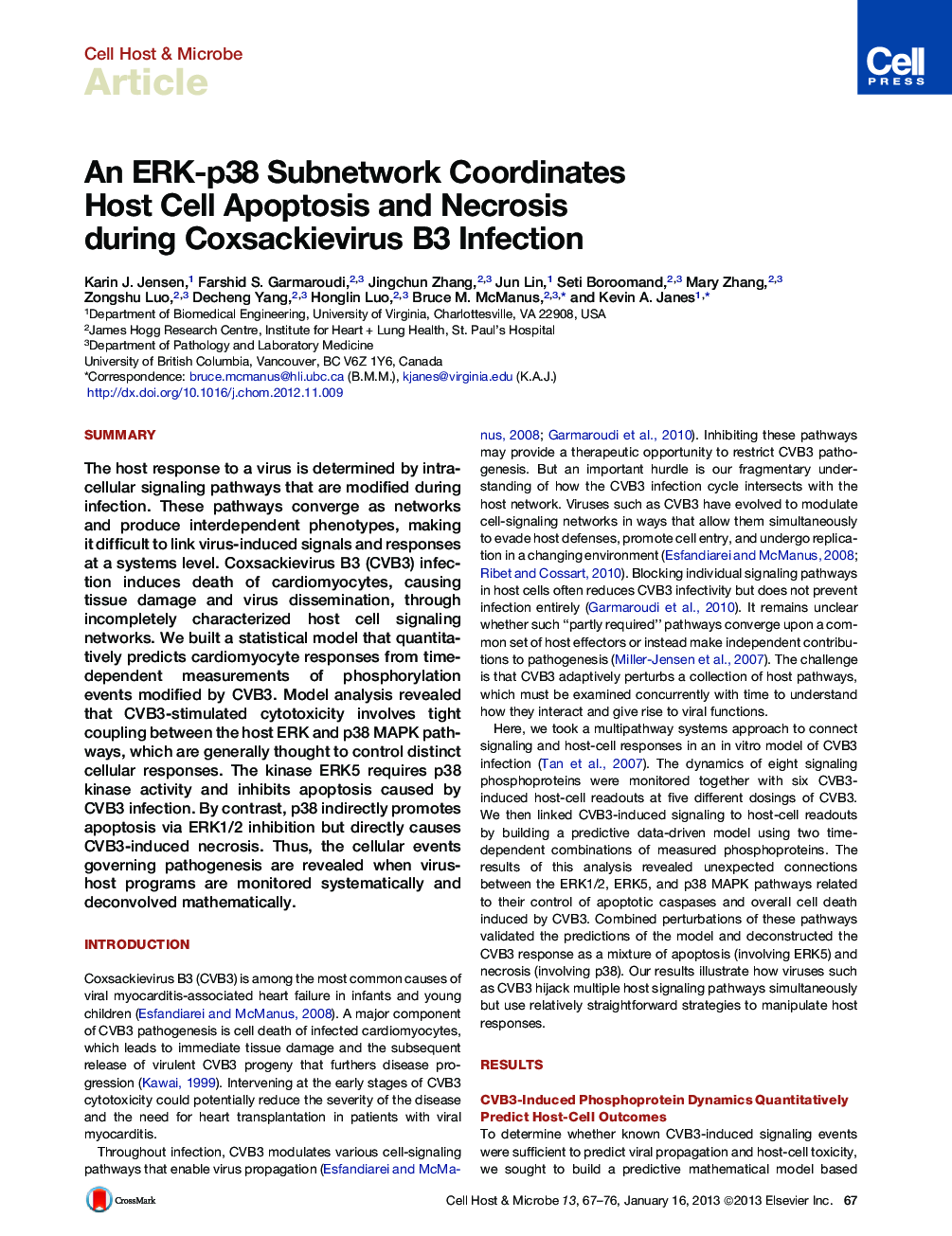| کد مقاله | کد نشریه | سال انتشار | مقاله انگلیسی | نسخه تمام متن |
|---|---|---|---|---|
| 4361265 | 1301365 | 2013 | 10 صفحه PDF | دانلود رایگان |

SummaryThe host response to a virus is determined by intracellular signaling pathways that are modified during infection. These pathways converge as networks and produce interdependent phenotypes, making it difficult to link virus-induced signals and responses at a systems level. Coxsackievirus B3 (CVB3) infection induces death of cardiomyocytes, causing tissue damage and virus dissemination, through incompletely characterized host cell signaling networks. We built a statistical model that quantitatively predicts cardiomyocyte responses from time-dependent measurements of phosphorylation events modified by CVB3. Model analysis revealed that CVB3-stimulated cytotoxicity involves tight coupling between the host ERK and p38 MAPK pathways, which are generally thought to control distinct cellular responses. The kinase ERK5 requires p38 kinase activity and inhibits apoptosis caused by CVB3 infection. By contrast, p38 indirectly promotes apoptosis via ERK1/2 inhibition but directly causes CVB3-induced necrosis. Thus, the cellular events governing pathogenesis are revealed when virus-host programs are monitored systematically and deconvolved mathematically.
Graphical AbstractFigure optionsDownload high-quality image (237 K)Download as PowerPoint slideHighlights
► Intracellular signaling predicts the fate of coxsackievirus B3 (CVB3)-infected cells
► p38 and ERK signaling pathways are tightly interconnected during CVB3 infection
► CVB3-induced apoptosis of cardiomyocytes is inhibited by ERK5 and ERK1/2 pathways
► CVB3 induces necrosis of cardiomyocytes via p38 activation
Journal: - Volume 13, Issue 1, 16 January 2013, Pages 67–76